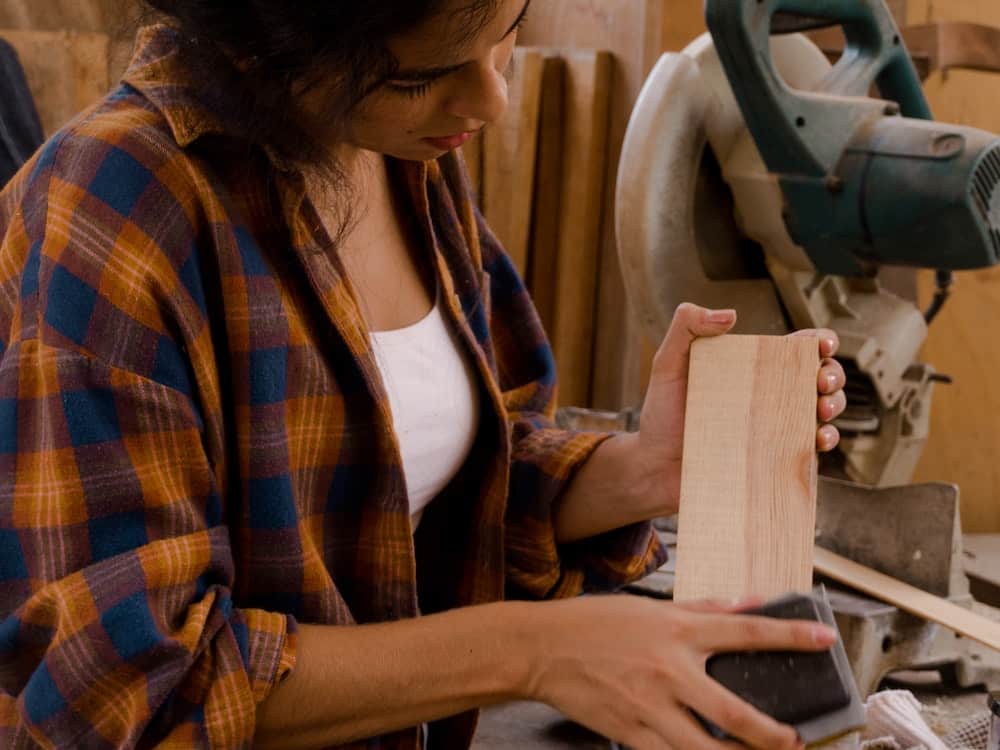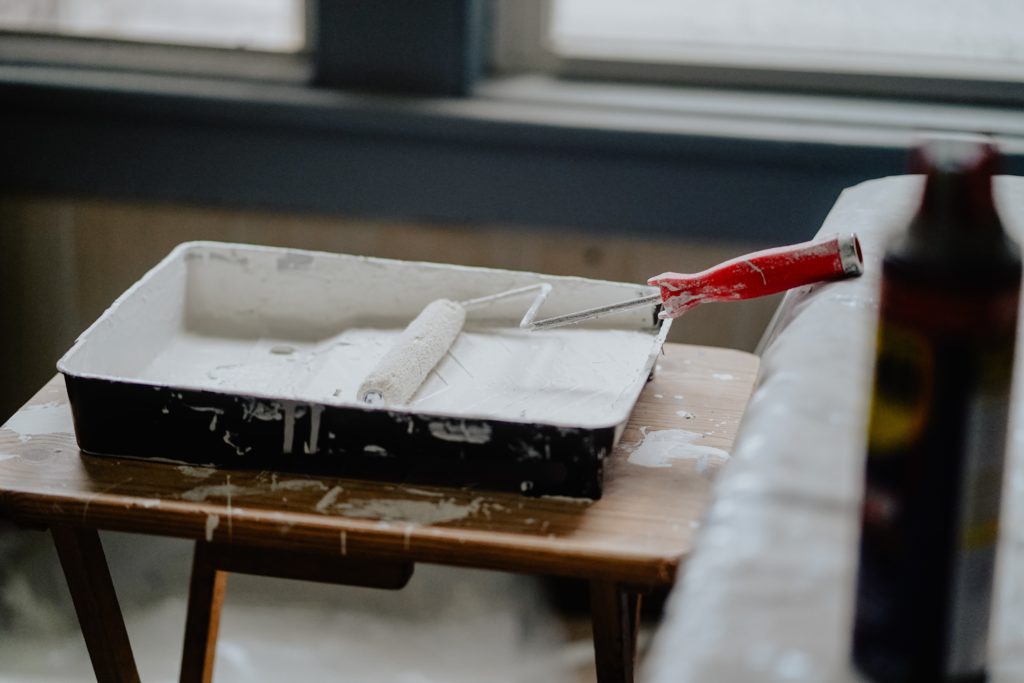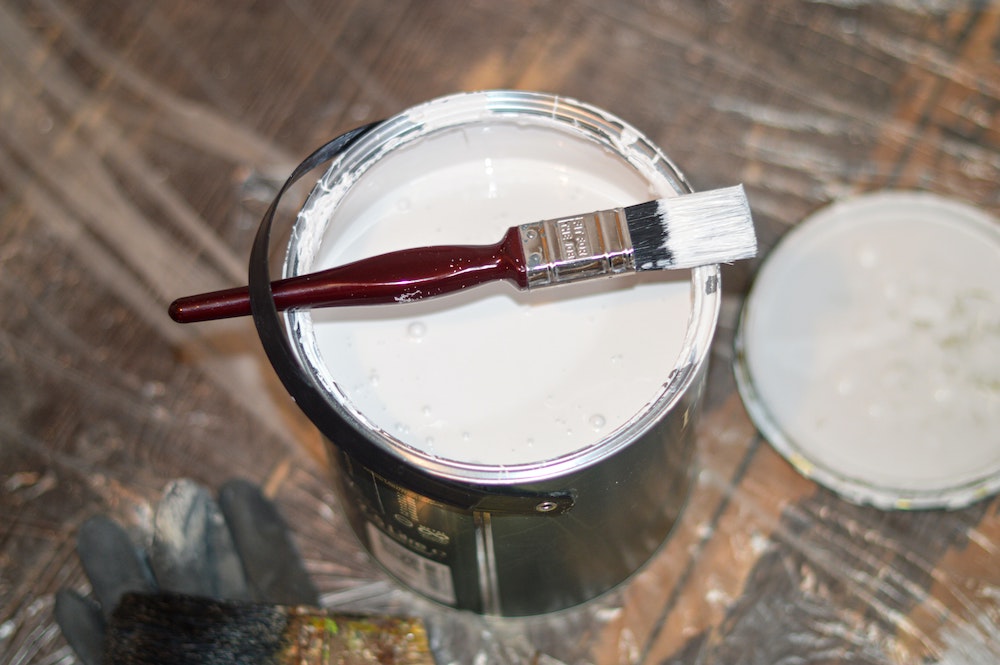What Happens if You Don’t Sand Before Painting?
It isn’t always necessary to sand a piece of furniture before painting it, however it may be necessary depending on the condition and type of the current finish. Weather you are painting furniture, trim, or walls, each can be different.
The initial condition of the surface will determine what exactly will happen if you don’t sand before painting. A clean, smooth, not glossy surface will take paint well. However paint can feel rough, streak, peel, chip, or even not adhere if not sanded first.
I was told that painting is 95% preparation and 5% application. The better the surface, the better the result.
Sanding is generally recommended to prepare a wooden surface because it levels out imperfections, and creates a little roughness for the new coat of paint or finish to adhere on. Honestly I usually sand everything except walls before I paint. Sometime a little, and sometimes a lot, depending on the old surface.
Do you have to sand off old paint before repainting furniture

I think it is a good practice to sand old paint before putting on a new coat or a different color. If the paint is in good condition, you don’t need to sand off completely, but instead just give a couple of passes of 120 or 150 grit sandpaper on a sanding block to rough up the surface. It’s ok if the bare wood showing through in places, as long it is smooth and flat.
It is important that the new paint you are putting on over the old paint is the same type. Latex on Latex, or Oil on Oil. If you are going to put a new different paint on top of a different kind, then I do recommend either sanding completely or using a primer that is compatible between the two different kinds of paint to bond them together.
Can you paint furniture without sanding it first
If the old paint is clean, oil free, and of the same type as the new kind, you might not need to sand at all.
It is rare that anything can be painted without any preparation.
The first step is for the surface should be washed. I use a bucket with warm soapy water (usually I use Dawn dish soap), and an old rag to gently clean the piece.
Once it is dry, I then use a tac cloth (any kind will work) to wipe off any excess dust. Like I said before, the better the surface, the better the result.
Then you are ready to test it. If you have a little extra time you can do a little sample to see if you need to sand at all!
Take the paint you want to use, and paint a small section – if, after it drys, it sticks well, and looks good, you are probably OK! If not, A light sanding might do the trick.
Other Surfaces
Of course you might not be starting with a painted piece – it might have a stain, oil or varnish. It might not be solid wood. Here are a few other examples
Can I paint over veneer without sanding

Veneer is a thin wood on the surface of a piece of furniture. It is real wood, so it can be stained, or painted, or oiled.
It is possible to paint over veneer without sanding, especially if the veneer is in good condition.
I wouldn’t completely ignore surface preparation however. Instead of sanding, I would use a high quality primer – I like to use this Bin Zinsser Synthetic Shellac Primer because it dries very quickly and bonds especially well to the old surface. It also can be lightly sanded before putting on your final paint color making a really smooth surface.
How do You Paint Over Wood Without Sanding
To paint over wood without sanding you need to use the right kind of paint. Thankfully paint technology has come a long way (it literally used to be plain water with pigments). Now we have paints that will adhere to almost anything with little preparation.
Most paints will stick to bare wood easily, and give a great finish, but it may take several coats to get complete coverage.
Can I paint a dresser without sanding it first?
Based on all the information above, you should now be able to evaluate and determine if you can paint a dresser without sanding it first. These three basic steps outline the procedure:
- Check to see if the surface is clean, dry, and dust free.
- Test out a small area with the paint you want to use.
- Let it dry and check for peeling, cracking, and streaking.
This test will determine if you need to sand it partially or completely before painting the rest of it.
Also, if the test part does peel, or look bad, it, and the rest definitely needs a complete sanding with 120-150 grit sandpaper. For an even smoother finish 220 grit is recommended.
But don’t start with 220. it will clog, and actually take longer. Start with the rougher 120, and then go to 220. It’s hard to explain when you will be done, but you will know it as you sand the piece.
Also there are lots of different modern paints that you can use with minimal surface preparation and get really high quality results. These paints may be more expensive than a latex based paint, but can save you the time and tedious work of sanding.
- Use a bonding primer like the Bin Zinsser Primer
- Use a Milk Paint and Bonding agent
- Use a mineral based paint
- Use Annie Sloan Chalk Paint.
Final thoughts
Depending on the type of paint and the condition of the material you want to cover it IS possible to not sand before painting. But beware, the better the surface preparation, the better the result.

